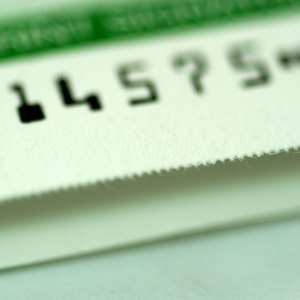
It’s not unusual for someone who is self-employed to have no pay stubs to show, and if you don’t make regular deposits into a bank account it can be tough to prove your income. This can make things tricky when it comes time to show your earnings for a car loan, to apply for government benefits and at tax time, but it can be done.
Keep a Log
People who receive tips or other small amounts of money on an ongoing basis should keep a log of this income. The IRS publication on reporting tip income says that a tip log is an acceptable means of proving your income for tax purposes, and it’s OK to keep it by hand or electronically. Record the information each day that you work. Save copies of any receipts that you get showing tips, such as credit card receipts and cash register tapes or printouts.
Get it in Writing
Workers who earn money, but don’t get check stubs or other official documents proving their income, should get a work agreement or a letter from the employer. The document must state who the employer is, what your working relationship is, how much you get paid and how often you get paid. It’s also helpful to include how long you’re been working there along with a contact number so that anyone following up on your claims can verify the document.
Personal Contacts
In some situations, it’s possible to get your income verified through a third party who has reasonable knowledge of your situation, such as a co-worker, a landlord or even a neighbor. You’ll have to provide the person verifying your income with written permission to check, but this can be a helpful alternative if you don’t have anything else to show. It can also be helpful as backup proof when combined with another method.
Tax Papers
If you are self-employed or an independent contractor who does work for other people or businesses, they must provide you with a 1099 form at the end of each year, showing the total amount they paid you for the year if it was over $600. Many self-employed individuals receive multiple 1099s each year. To prove your income for a given year, collect and present all of your 1099 forms. If you don’t have a 1099, show your most recent income tax filing; this is commonly accepted as proof of income for the past year.
Keep Those Invoices
Save a copy of every invoice that you send out and mark them with the date you did the work, the payment method, the amount you received and when you received it. Each invoice should be itemized to clearly show what work you did, for whom you did it and any costs, such as materials associated with the job. These are especially helpful for showing small amounts of income throughout the year. Many lenders will accept these as proof when you enter all the information on a profit and loss statement for your business.

